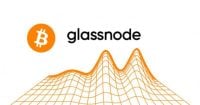Decoding the Signal: Can Ripple's Office Art Predict XRP's Future?
- Ripple's CTO David Schwartz sparked XRP price speculation with a San Francisco office art display featuring 55 triskelion canvases. - The $55/XRP correlation lacks official confirmation, as Ripple has no history of using visual cues for price targets. - Analysts emphasize tangible factors like regulatory clarity and RLUSD's launch over symbolic signals for XRP's long-term value. - A 1,800% price increase to $55 by 2025 remains unrealistic without seismic market shifts or institutional adoption. - The epi
In the world of cryptocurrency, where volatility and speculation often reign supreme, investors are perpetually on the lookout for signals—any signal—that might hint at the next big move. Recently, a seemingly innocuous Instagram post by Ripple's Chief Technology Officer, David Schwartz, sparked a frenzy in the XRP community. A photograph of a wall in Ripple's San Francisco office, adorned with 55 triskelion-themed canvases, was interpreted by some as a cryptic confirmation that XRP would hit $55 by 2025. But is this a meaningful market signal, or just another case of crypto's well-documented tendency to read meaning into randomness?
The claim hinges on a simple arithmetic leap: 55 art pieces = $55 for XRP. XRPcryptowolf, a vocal XRP advocate, was the first to draw this connection in a comment on Schwartz's post, writing, “$55 XRP confirmed.” The idea gained traction when another user, SStaX, echoed the sentiment. Yet, as with many viral crypto predictions, the logic is fragile. Ripple and Schwartz offered no explicit explanation for the display, nor have they historically used such visual cues to communicate price targets. The triskelion, a stylized three-legged logo, is a brand symbol—nothing more.
To evaluate the validity of this signal, it's worth comparing it to more conventional market indicators. At the time of the post, XRP was trading near $2.96, with a market cap of $176 billion. Analysts were already factoring in key variables: Ripple's post-lawsuit regulatory clarity, the potential for XRP to gain traction in cross-border payment corridors, and the launch of RLUSD, Ripple's stablecoin. Bullish projections averaged $2.80 by year-end 2025 and $5.25 by 2030, contingent on institutional adoption and favorable regulatory tailwinds. These forecasts are grounded in tangible factors—adoption metrics, product launches, and macroeconomic trends—not art displays.
The $55 prediction, by contrast, lacks any such foundation. For context, XRP would need to rise over 1,800% from its August 2025 price to reach $55. Even the most optimistic analysts didn't suggest such a move without a seismic shift in the market. Skeptics like Unico, a commenter on the same thread, rightly questioned whether XRP could sustain a value above $3, let alone $55. The cryptocurrency's utility as a bridge currency, while valuable, doesn't inherently justify such a price leap.
This episode highlights a broader issue in crypto: the tendency to treat corporate actions as coded messages. In traditional markets, a CEO's LinkedIn post or a company's office renovation rarely influences stock prices. But in crypto, where narratives often drive sentiment more than fundamentals, even a vague image can become a rallying point. The danger lies in conflating correlation with causation. Just because a number appears in a public post doesn't mean it reflects a strategic goal or market forecast.
For investors, the lesson is clear: treat symbolic signals with skepticism. While Ripple's post-lawsuit progress and RLUSD's launch are legitimate catalysts, they should be analyzed through a lens of real-world impact, not numerology. XRP's long-term value will depend on its ability to secure partnerships, improve liquidity, and navigate regulatory hurdles—not the size of an art collection in San Francisco.
That said, the XRP community's enthusiasm isn't entirely misplaced. Ripple's ecosystem is evolving, and the company's focus on cross-border payments remains a compelling use case. If XRP can demonstrate measurable adoption—say, by securing contracts with major financial institutions or integrating with central bank digital currencies (CBDCs)—its price could see meaningful gains. But those gains will stem from execution, not art.
In conclusion, the $55 prediction is a cautionary tale. It underscores the importance of distinguishing between hype and substance in crypto markets. Investors should prioritize data-driven analysis over speculative interpretations. While Ripple's art display may have generated buzz, it's the company's products, partnerships, and regulatory compliance that will ultimately determine XRP's trajectory. As always, diversification and a long-term perspective remain the bedrock of prudent investing in this high-risk, high-reward space.
Disclaimer: The content of this article solely reflects the author's opinion and does not represent the platform in any capacity. This article is not intended to serve as a reference for making investment decisions.
You may also like
Forward Industries disclosed that the total SOL holdings have exceeded 6.87 million
Powell sees signs of crisis
Powell's primary motivation for halting quantitative tightening is to prevent a liquidity crisis in the financial markets.

Glassnode: Bitcoin options market shows premium concentration at $115K–$130K

Ethereum Looks Ready – Key Support Holds As Bulls Aim Fresh Upside Push
